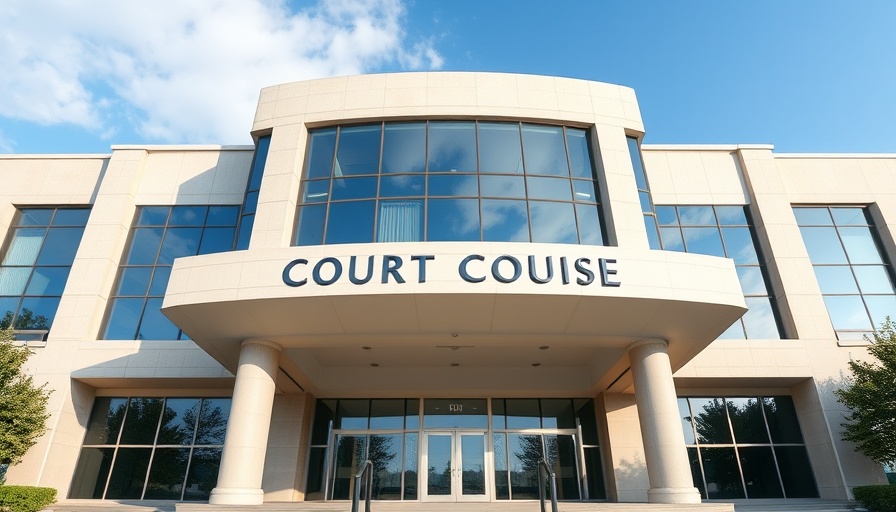
From Incarceration to Liberation: The Story of Samuel Sanchez
Samuel Junior Sanchez's journey through the American criminal justice system is a powerful story of hope, resilience, and the flaws that can plague legal processes. After serving nearly 15 years of a staggering 75-year sentence, Sanchez's fortunes changed thanks to the unrelenting efforts of his family and a shocking revelation about prosecutorial misconduct.
A Life Changed Behind Bars
Convicted in 2006 for a violent incident that left a passenger paralyzed, Sanchez had entered prison as an angry young man, grappling with the consequences of his actions. However, over the years, he underwent a profound transformation. By the time his sister reached out for help in 2021, he was not the same person who had been driven by rage. Instead, he had dedicated himself to biblical study and mentoring younger inmates to avoid gang life, illustrating the cognitive and spiritual growth he experienced while incarcerated.
The Scandal That Changed Everything
The turning point in Sanchez's case came after revelations about Ralph Petty, a once-respected assistant district attorney in Midland County. Petty had not only been overseeing cases like Sanchez's but was also moonlighting as a paid law clerk for the judges involved without disclosing this conflict of interest. His unethical behavior was not isolated; it was part of a more pervasive misconduct that affected dozens of cases.
The misconduct of Petty came to light through the case involving Clinton Young, another inmate facing serious legal challenges. It sparked public outrage, leading to the exposure of a system that tolerated ethical breaches and undermined the integrity of the legal process. The fallout was significant, resulting in the reversal of several convictions, including Sanchez’s.
A Long Road to Redemption
On June 12, 2025, Sanchez stood in a courtroom surrounded by family, a poignant end to his long battle. The Texas Court of Criminal Appeals had overturned his aggravated assault conviction as a direct consequence of Petty’s actions. Sanchez’s new sentence, effectively allowing him to walk free, was negotiated through dedicated legal representation from Blizzard & Zimmerman, who fought tirelessly for his rights.
“He just cried,” said Jacob Blizzard, his attorney, recounting Sanchez’s overwhelming emotions at the moment of his release. This touching moment centers the narrative: a man who once lived in a world of darkness now had a chance to reunite with his family and rebuild his life.
The Broader Implications
Sanchez's story is not just an isolated incident; it highlights systemic issues within the criminal justice system that often go unnoticed. The scandal that led to his release raises questions about the safeguards in place to protect defendants' rights and the responsibility of attorneys and judges to maintain ethical standards in the courtroom.
With at least four men, including Young and Sanchez, having their sentences overturned due to the misconduct uncovered, the legal community must confront the broader consequences. Blizzard articulated these concerns, stating, “What’s so egregious is how systematic it was.” This indicates that Sanchez's liberation should serve as a catalyst for reform—demanding scrutiny over prosecutorial conduct and the ensuing impacts on justice.
Looking Forward: Engaging Communities
As communities rally around justice reform, Sanchez’s case emphasizes the need for vigilance in legal practices and greater public awareness about prosecutorial misconduct. The advocacy that brought Sanchez home can be a model for future efforts, emphasizing the strength of community support in seeking justice.
Moreover, families facing similar struggles should feel empowered to seek assistance, inspired by Sanchez's family who contacted local attorneys when they saw a glimmer of hope. The emphasis on repairing lives rather than simply punishing them must become central to our approach to criminal justice.
As we reflect on Samuel Sanchez’s journey, it serves as a testament to resilience, the importance of family advocacy, and the potential for the justice system to learn from its mistakes. More than just a legal victory, it is a human victory—one that calls for continued dialogue and reform to prevent future injustices.
 Add Row
Add Row  Add
Add 




Write A Comment